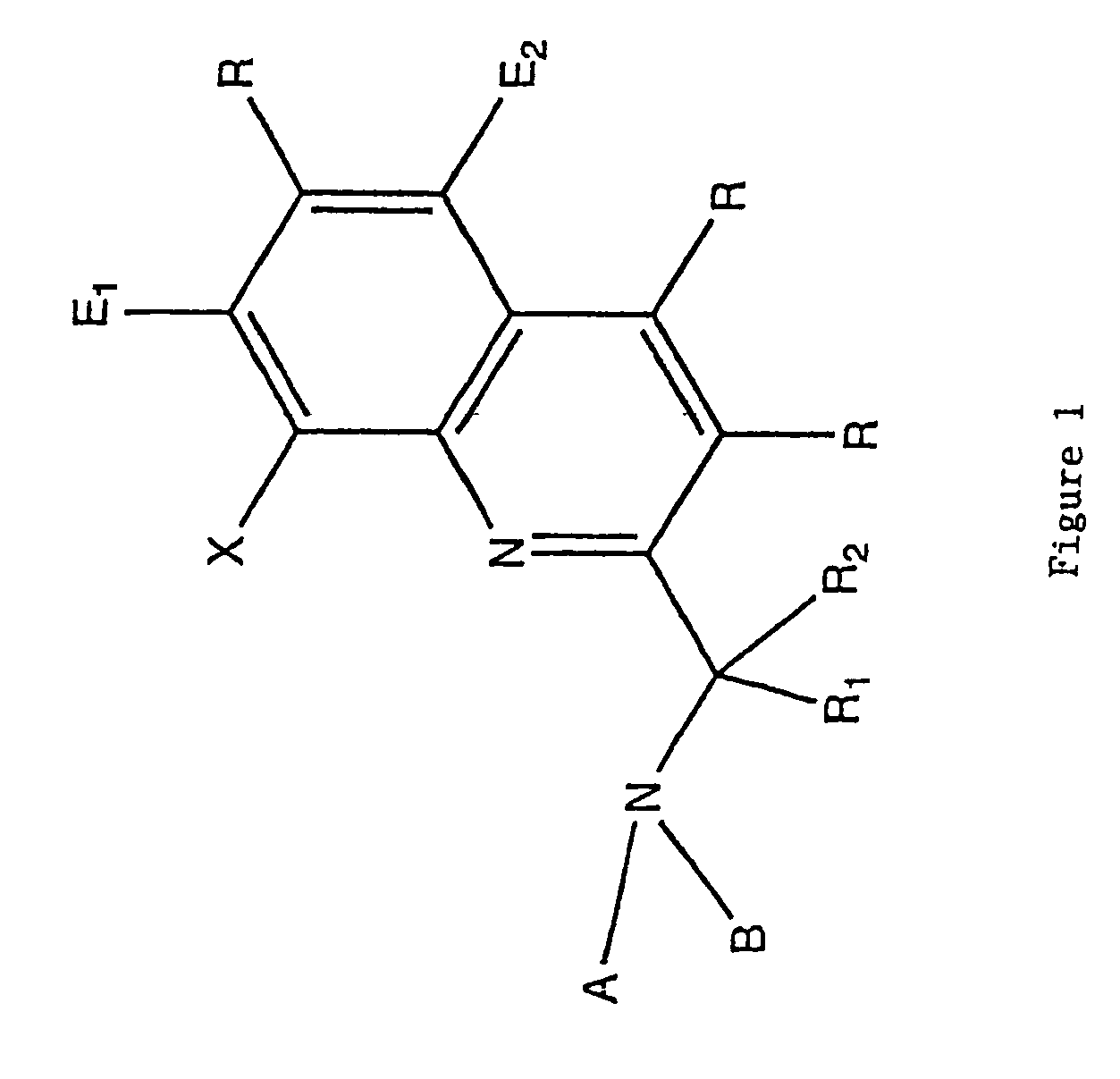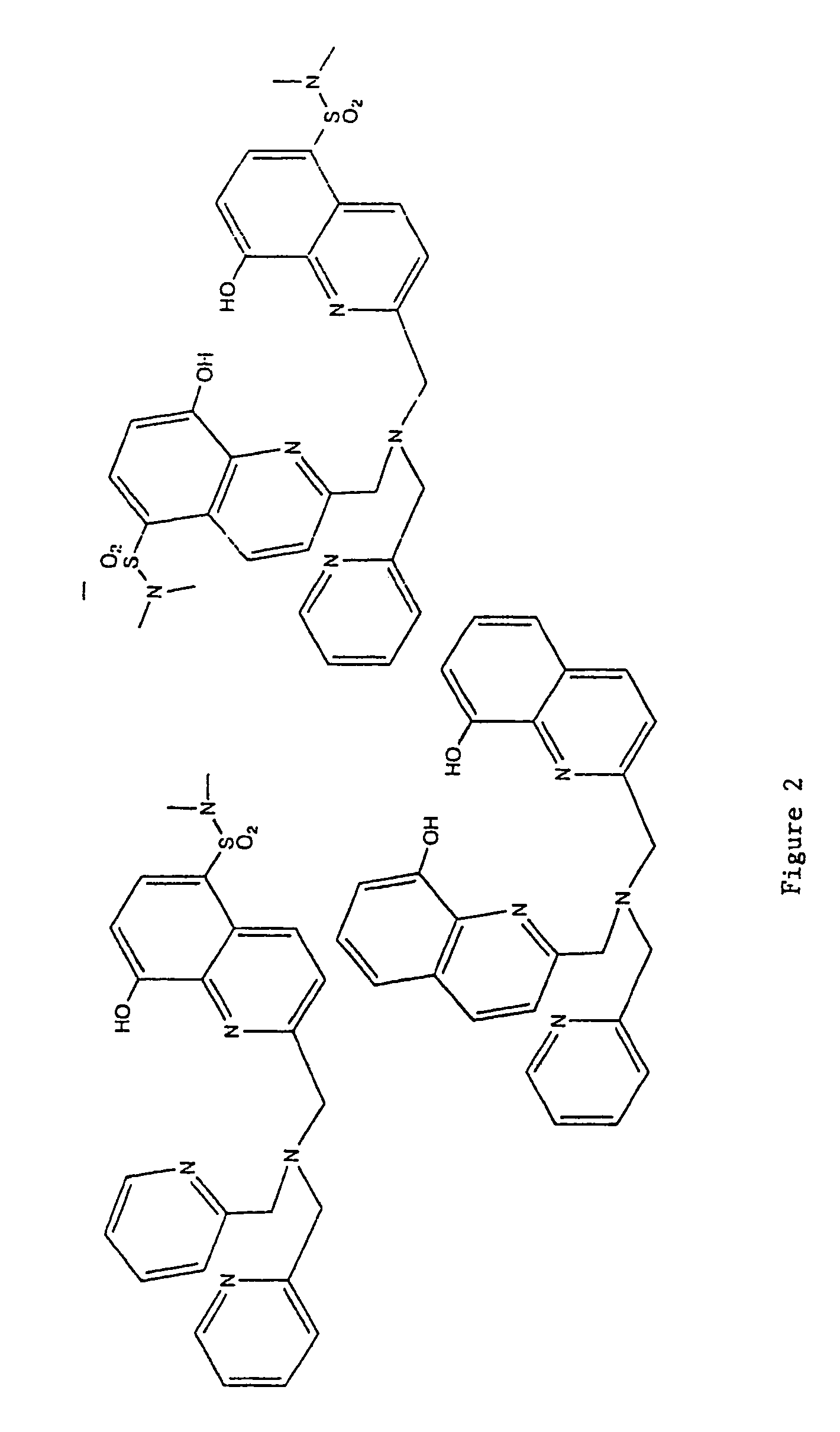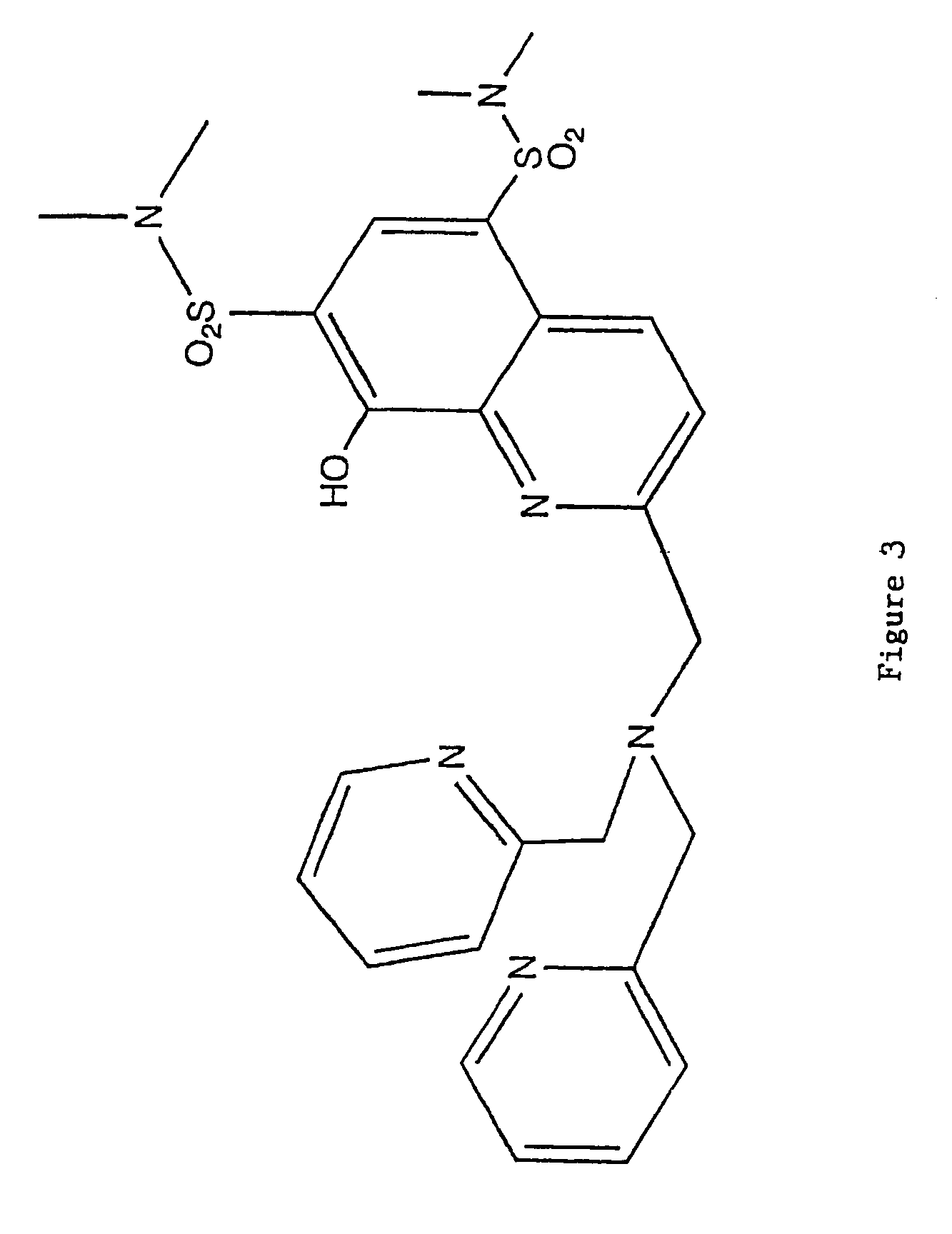8-hydroxyquinoline tripodal metal ion probes
a technology of metal ions and hydroxyquinoline, which is applied in the field of fluorescent ligands, can solve the problems of affecting the normal zn, retarding sexual maturation, and skin damage, and achieves the effect of strengthening the binding of zinc or cadmium
- Summary
- Abstract
- Description
- Claims
- Application Information
AI Technical Summary
Benefits of technology
Problems solved by technology
Method used
Image
Examples
Embodiment Construction
[0063]The most important property exhibited by the tripodal ligands of the present invention is strong preferential binding of Zn(II). This strength of binding is similar to the one observed in zinc enzymes. The binding constant of TRS was found to be log K1=13.77, which falls within the median physiological zinc concentration. TRS would be able to sense Zn(II) at femtomolar concentrations. TRS2 and TRSS2 showed subpicomolar sensitivity towards Zn(II) with binding constants log K1=12.53 and log K1=13.29, respectively.
[0064]Selectivity for zinc over biologically abundant metals such as calcium, magnesium, sodium and potassium was observed.
[0065]The fluorescent zinc or cadmium sensors of the present invention are highly sensitive towards the analyte. Their sensitivity (femtomolar to sub-picomolar) lies within the concentration range of physiologically occurring Zn(II) or Cd(II). Therefore, these sensors can be used as quantitative zinc probes in fluorescence microscopy. These tripodal...
PUM
| Property | Measurement | Unit |
|---|---|---|
| emission wavelengths | aaaaa | aaaaa |
| excitation wavelengths | aaaaa | aaaaa |
| wavelengths | aaaaa | aaaaa |
Abstract
Description
Claims
Application Information
 Login to view more
Login to view more - R&D Engineer
- R&D Manager
- IP Professional
- Industry Leading Data Capabilities
- Powerful AI technology
- Patent DNA Extraction
Browse by: Latest US Patents, China's latest patents, Technical Efficacy Thesaurus, Application Domain, Technology Topic.
© 2024 PatSnap. All rights reserved.Legal|Privacy policy|Modern Slavery Act Transparency Statement|Sitemap



